Greetings from France! (via pre-scheduled post)
Right about the time that this blog is posting I’ll be starting my presentation at the very first French harp guitar festival! But I wanted my American (and worldwide) readers to have the chance to see a spectacular new discovery at the same moment as the European audience over there does…will…is.
As mentioned earlier, since all five concert performers there happen to now play harp guitars with super-trebles, I thought it would a perfect excuse to explore in depth the history of that subset of instruments. And yes, I managed to come up with the title:
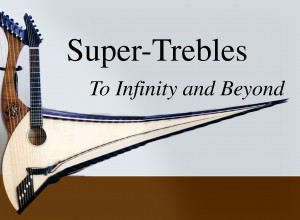

At about Slide 28, I’ll be discussing the very beginnings of the “super-treble” concept, which may have started with a rare one-off instrument that seems to be a true hybrid – a melding together of guitar and psaltery.
For the uninitiated, at left is one of the more iconic forms of psaltery (they came in various shapes and sizes). They were precursors of zithers (our ubiquitous fretless zithers are a throwback), and as you can imagine from the illustration, functioned pretty much exactly as super-trebles do on a harp guitar.
About ten years ago I learned (from Steve Sedgwick) of an instrument from Italy in the late 1700’s dubbed the “chitarra-salterio” (psaltery-guitar). And just now (a few days before I leave for France), I finally obtained an image of it.
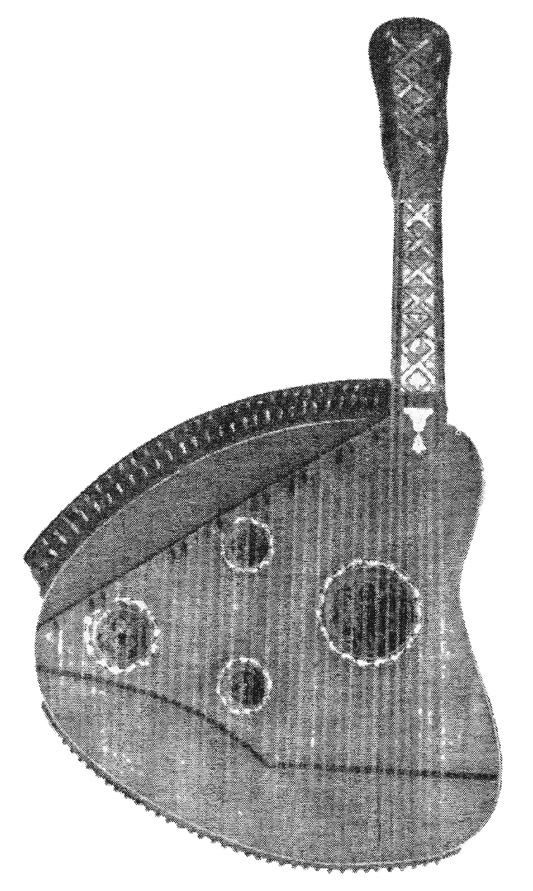 Pretty wild, huh?!
Pretty wild, huh?!
It has six double courses on the neck and on the “wrong” side, twenty-nine double brass courses!
Researcher J. Godwin (in his 1974 Lute Society Journal article) thought is must have been an “either/or” instrument, with only one section to be played at a time. But one would have to have had the arms of a baboon (or especially large gibbon) to possibly be able to reach over and play the guitar section. I mean, seriously!
My festival presentation then continues with a look at the remaining forms of early harp guitars with psaltery-like strings or influences.
Godwin also mentioned a French “zithergitarre” (also 18th century) that apparently has 20 psaltery strings on the “correct” side. This instrument survives in Berlin’s Hochschule collection (#402), and I would appreciate any help in getting information and an image.
Finally, Godwin lists an instrument mentioned in a Madrid paper in 1795 called a “vihuela asalteriada.” Sounds like a possible third psaltery-guitar from the same era, though one we may never see.
![]()
Actually, the vihuela asalteriada almost sounds like the instrument we saw on my blog from 2011 of Antonio Montano, the blind Spanish or Portuguese singer/songwriter/improvisational poet who died in 1816. His instrument would have been from the same era as well. Strangely, the source refers to his instrument as a “guitarra-tiorba” – a name that clearly seems wrong if the depicted “psaltery-guitar” in the drawing is accurate.
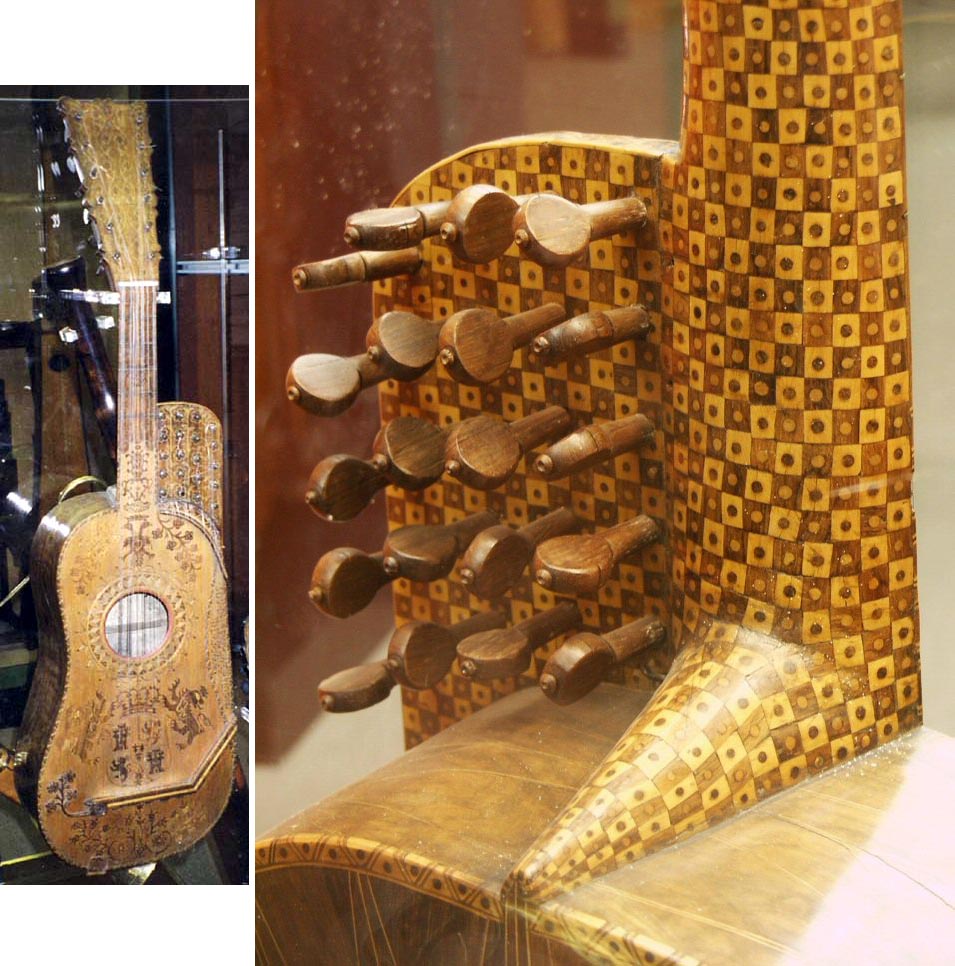
The only surviving instrument that seems remotely similar to Montano’s is the well-known and stunning instrument built by Rafael Vallejo of Granada, c.1790, allegedly for King Charles IV of Spain. It has 6 double gut courses on the neck and 20 wire strings arranged in 10 courses on the body, all tuned by full-size friction tuners mounted in the slab jutting out of the body. It may also have been meant to be a combination of guitar and psaltery (the psaltery then still a popular instrument in Spain).
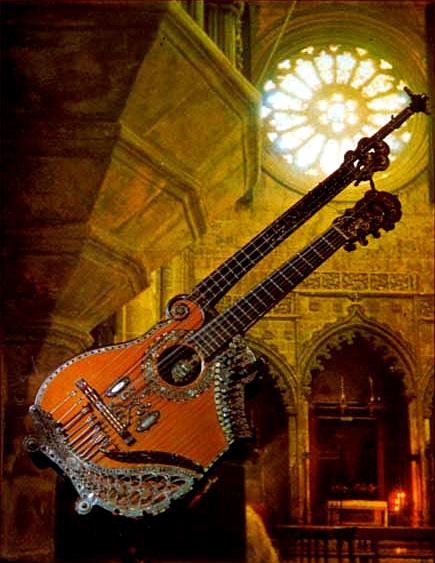
A final (and last?) deliberate melding of psaltery and guitar may have been what Spain’s Gallegos was thinking when he created his famous 1851 Guitarpa. It has 31 psaltery-like super-trebles combined with a 6-string guitar neck and a second “cello” neck, the 3 strings of which could be fretted but were probably played harp guitar-style.
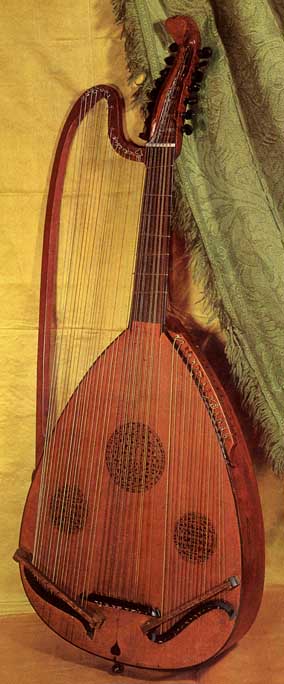
The one common denominator between these early “psaltery-guitar” harp guitar forms is that their builders and players were obviously really serious about their super-trebles…no measly 7 or 8 “tinklies” for them!
Finally, if we include harp guitar “relatives,” there is of course the fabled “polyphant” built by Tieffenbrucker circa 1590. This surely must have been the world’s first plucked fretted instrument to offer both “sub-basses” and “super-trebles”! Neither guitar nor lute, historians tend to classify it as a form of cittern. I consider it more of a “one-off chimera” of harp, lute, cittern and psaltery.
Whatever it is, I want one.

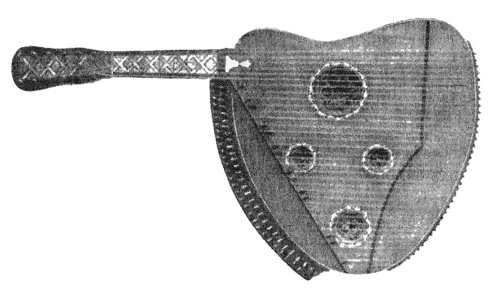
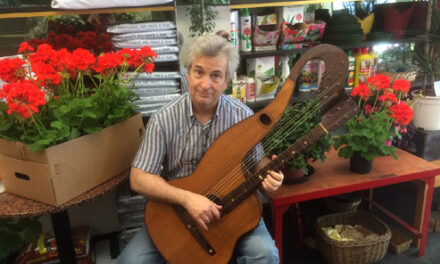
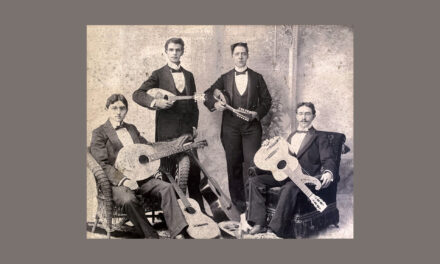
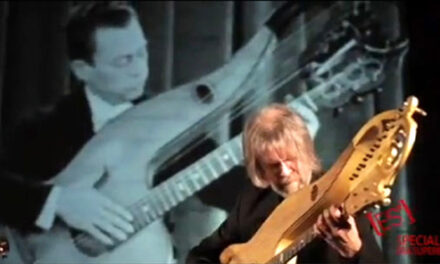
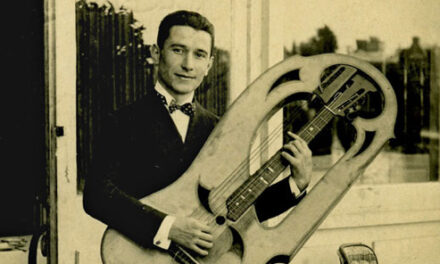
The Festival went very well, and Benoit did a fantastic job translating my detailed presentation to the audience. Blog series to come…